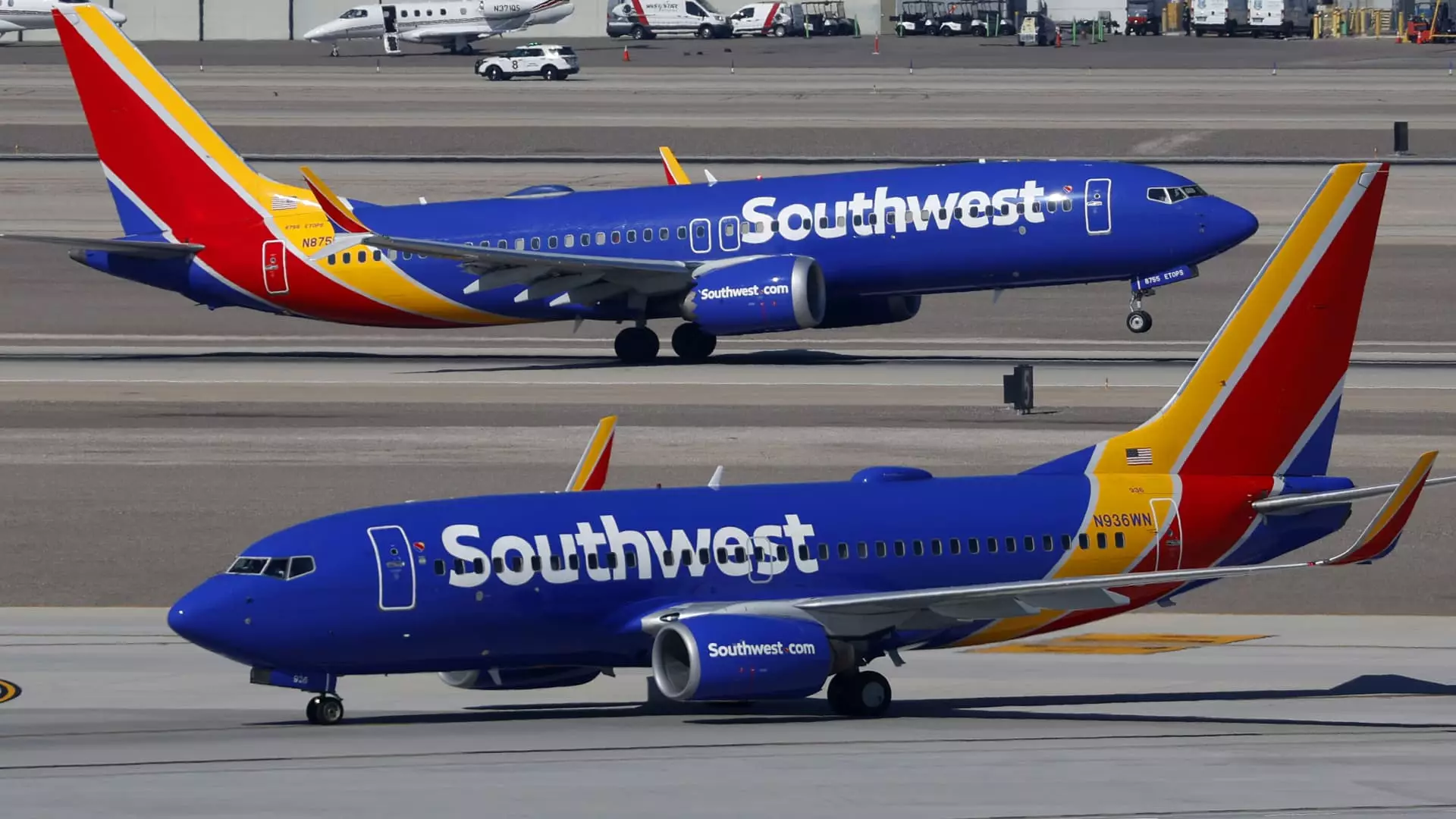For over five decades, Southwest Airlines has stood apart in the aviation industry by championing a laissez-faire approach to seating — open seating, where passengers line up at boarding gates and choose their seats on a first-come, first-served basis. This policy created a unique, almost communal atmosphere that endeared passengers and distinguished Southwest from its competitors. However, in a rapidly evolving airline market increasingly driven by revenue diversification, the airlines’ leadership has decided to auction their longstanding tradition. Starting January 27, 2024, the airline will implement assigned seating, a move that shakes up Southwest’s cherished identity while aiming to bolster its financial standing.
This transition from open seating to assigned seats is no small change; it signifies a broader strategic shift from a culture of spontaneity to one of optimization and profit maximization. The decision reflects a recognition that the airline must adapt and adopt modern customer service models to remain competitive amid industry giants like Delta, American, and United, all of which have incorporated assigned seating as standard practice. At its core, this relates to a crucial question: can Southwest’s historic cultural appeal survive when faced with the pragmatic realities of a profit-driven airline landscape?
Strategic Financial Overhaul and Revenue Expansions
Southwest’s move isn’t merely rooted in tradition; it’s embedded in a bold push for revenue growth. The airline announced earlier this year that it expects to generate an additional $800 million in earnings before interest and taxes (EBIT) this year alone and projected a staggering $1.7 billion boost by 2026 through a suite of revenue initiatives. The introduction of assigned seating forms part of a larger overhaul that includes new baggage fees and fare structures, all designed to increase ancillary income and improve profitability margins.
The airline’s leadership is clearly seeking new revenue streams as competition intensifies. By reducing the unpredictability of boarding, Southwest aims to streamline operations, reduce delays, and increase aircraft utilization, indirectly boosting revenue. Additionally, selling pre-assigned seats, especially preferred and extra-legroom options, creates entirely new revenue channels while giving consumers greater control. This overhaul demonstrates a fundamental shift: Southwest recognizes that maintaining profitability demands innovation, even at the expense of its core cultural identity rooted in openness and spontaneity.
Innovation in Boarding and Customer Experience
Modernization involves more than just revenue — it’s about balancing efficiency with customer satisfaction. Southwest, well aware of its loyal customer base, has invested heavily in testing and modeling to ensure these changes do not lead to longer boarding times or customer frustration. They’ve carefully designed a new boarding process that categorizes passengers into eight groups, prioritizing top-tier frequent flyers, premium ticket holders, and cardholders, while still offering standard options for casual travelers.
This new hierarchy disrupts the classic open seating chaos, substituting it with a structured system that, on paper, promises faster turnaround times and more predictable boarding processes. While some may mourn the loss of the lively, communal boarding rituals—those moments of anticipation and social interaction—they will be replaced by a more organized, revenue-focused strategy. The question remains whether this transition will genuinely satisfy customers or alienate those who cherished Southwest’s inclusive, unstructured approach.
Customer Choice and Cabin Reconfiguration
Southwest is carefully redesigning its aircraft interiors to blend tradition with modern amenities. About a quarter of its fleet now features extra-legroom seats, which customers can purchase ahead of time or access through early boarding options, enhancing passenger comfort and ancillary revenue. The airline continues to sell early access to boarding, enabling passengers to secure preferred seats, including those with extra legroom, thus offering options for different comfort levels and budgets.
The company also emphasizes that families and groups can still coordinate their seating preferences—albeit within the new framework—if they opt for certain products or purchasing options. For loyal customers, the changes may feel less intrusive; but for occasional flyers accustomed to open seating, the shift may seem significant. By offering tiered access based on fare type and loyalty status, Southwest seeks to retain its customer base while attracting more affluent travelers willing to pay for added convenience.
Changing the Culture: Will Loyalty Survive?
The coming transition may prove to be a pivotal moment for Southwest. Its open seating policy — celebrated and oft-copied — has been a cornerstone of its brand identity. Will customers accept assigned seats with the same enthusiasm, or will this reshape Southwest’s reputation beyond its financial metrics? The airline’s management appears optimistic, emphasizing that the change can coexist with loyalty and customer care.
At the heart of this evolution is a pragmatic acceptance that competitive airlines are honing their revenue strategies relentlessly. Southwest’s leadership believes that by offering a mix of affordability, efficiency, and optional premium features, they can strike a balance that preserves customer satisfaction and boosts profitability. Nevertheless, as history shows, altering an airline’s cultural fabric entails risks. The true test will be in how well Southwest manages the transition, both operationally and emotionally, as it seeks to redefine what it means to fly with the carrier of “The Friendly Southwest” in the 21st century.

